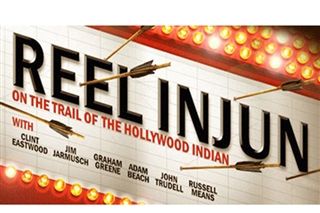Recently, the IB Language & Literature 11 and the IB Literature 11 students had the chance to watch the movie Reel Injun: On the trail of the Hollywood Indian, which is a feature-length documentary by Cree filmmaker Neil Diamond. The movie looks at the shifting portrayals of North American Indigenous people through a century of cinema, and served as an introduction to media representations of First Nations people as students transition from their Grade 11 content into their Grade 12 studies.
After watching the movie, students were joined by Indigenous Educator James Taylor to debrief the viewing and answer some questions.
“It was good,” said Juliette. “We saw different decades and how people perceived First Nations over time—I thought it was interesting and then being able to ask Mr. Taylor questions after was really important.”
“As an Indigenous person I thought it was really cool to see how the perception evolved over the different decades,” added Ruby Narte. “At one point they were hated, but then it was cool to be Indigenous.”
The film strives to provide context for modern issues in media representation by going back to the beginning of narrative film history and then working forward to connect shifts to historical events, including:
-
Silent films and early cinema culture in North AmericaNational psyche shifts in the 1930s and the growth of Westerns as a cultural touchstoneWider human and civil rights movements in the 1950s and 1960s that led to appropriation and romanticised versions of old stereotypical representations, turning the ‘Hollywood Indian’ into a symbol of free-spiritedness and connection to nature1970s evolution of ‘the justice fighter,’ wherein the First Nation person becomes an embodiment of any oppressed people ‘fighting back’The Western resurgence at the box office and the more sympathetic films of the 1980s to 1990s that still featured white heroes at the centreThe birth of independent First Nations cinema, aka ‘the Renaissance.’ Indie films rose up in the late 1990s to the present, and have become a way for First Nations people to tell their own storiesStudents came up with a variety of different topics to discuss with Mr. Taylor, including appropriation, his thoughts on the documentary, key historical events he thought all high school students should learn, and recommendations for other films for people who want to learn more.“I always enjoy talking with our youth and seeing that they can see through the multilayers,” Mr. Taylor explained. “When you look at something like that movie showing how systemic racism was born out of Hollywood’s lack of humility to learn about the real history in the Americas.”Having recently completed their Individual Oral assessments and thus wrapped their Grade 11 content, students are already exploring their first Grade 12 focus author: Thomas King. Beginning with short stories from his collection One Good Story, That One, students in Literature 11 are ‘getting dramatic’ in order to explore the oral qualities of King’s writing. Small groups have been adapting stories into a dramatic performance for class—considering the effects of sound, light, movement and audience interaction as suggested by King’s writing—and planning student-led seminars to unpack allusions and style choices in each text.One group worked on the story ‘Totem:’ “It’s about this totem pole that keeps regrowing in a museum and they keep trying to cut it down,” explained Rebecca Palm. “It keeps making noise, and people keep saying it’s annoying and distracting. I feel like it can be interpreted as a metaphor for Indigenous voices.” From ducks that turn into humans to many coyote-based shenanigans, there has been a lot of magic in the air in Literature lately.Language and Literature students are taking this same collection of scintillating short stories home with them as their curriculum text for summer reading, and Literature students will extend their work with King by taking home his novel Green Grass, Running Water, as well as listening to his CBC Massey lectures The Truth About Stories.Solomon Yi-Kieran has been reading the summer text already and came into class saying, “I can’t put this down! I don’t know what’s happening but I can’t put this book down. The use of language is just captivating—it makes you want to keep reading.” Solomon was immediately intrigued by the chapter titles, which with a little research (while Ms. Elbert was still talking to the class…) were revealed to be written in the Cherokee script. Per Solomon’s immediately fascinating research, they’re perhaps about the medicine wheel—a cardinal direction and colour at the start of each book section.There is much to be explored in Thomas King’s funny, deeply symbolic, and thoughtful literature and Ms. Elbert knows everyone will be wanting to pick him up for their HL Essay next year! In the meantime, ask your Grade 11 what story “covered with scraggy Coyote fur” they liked best.





